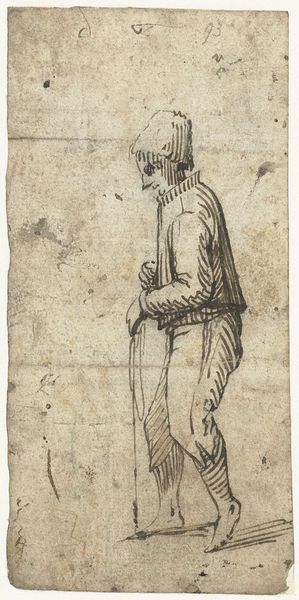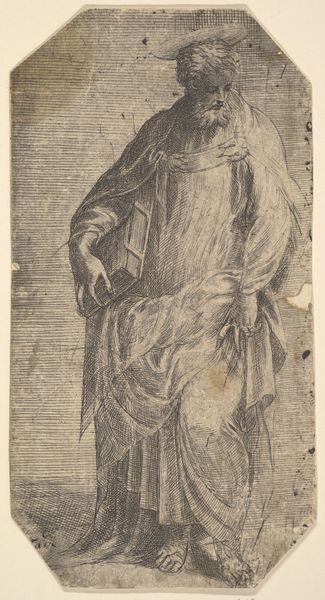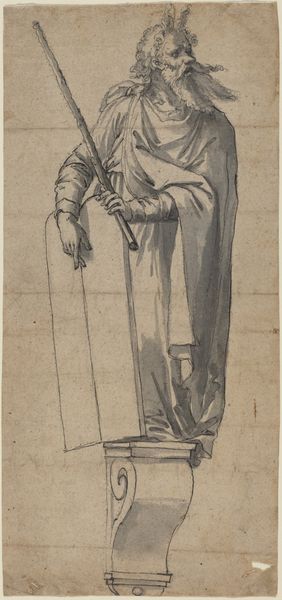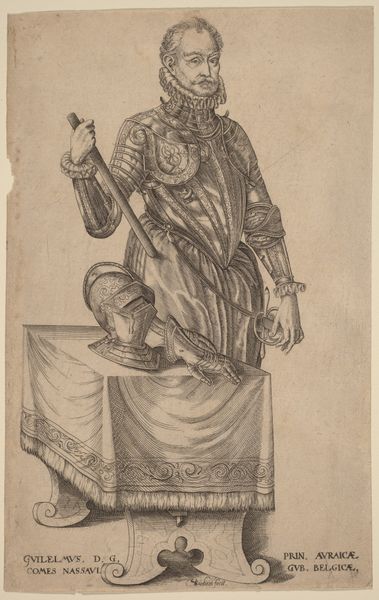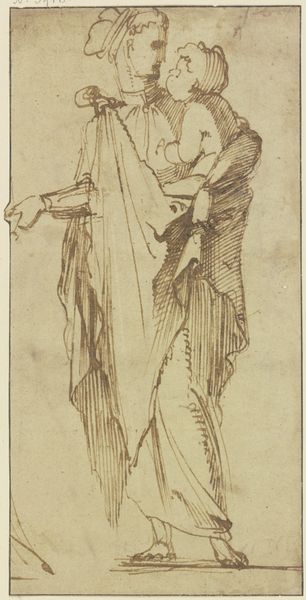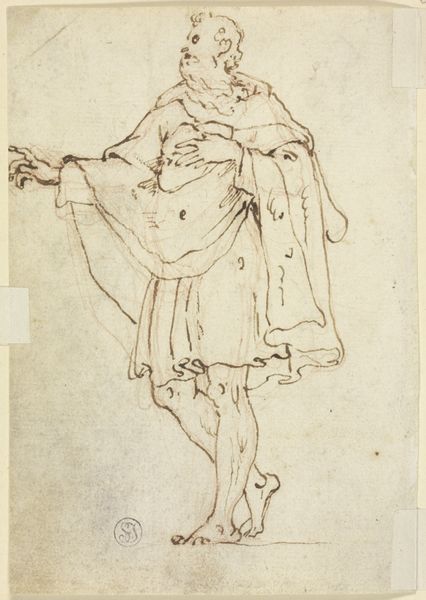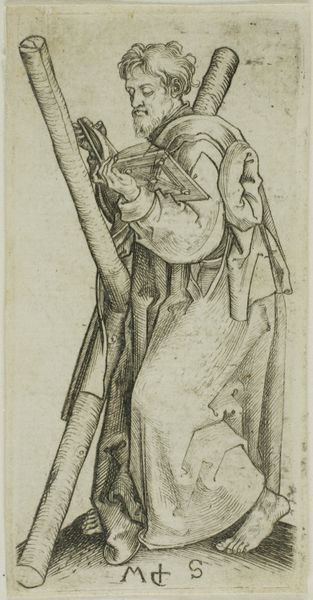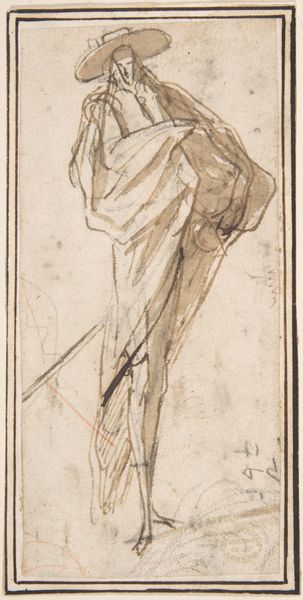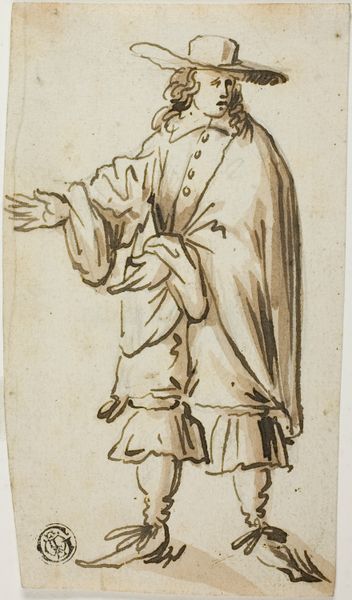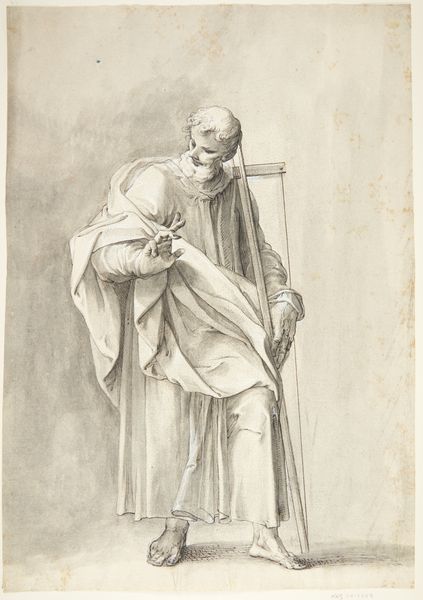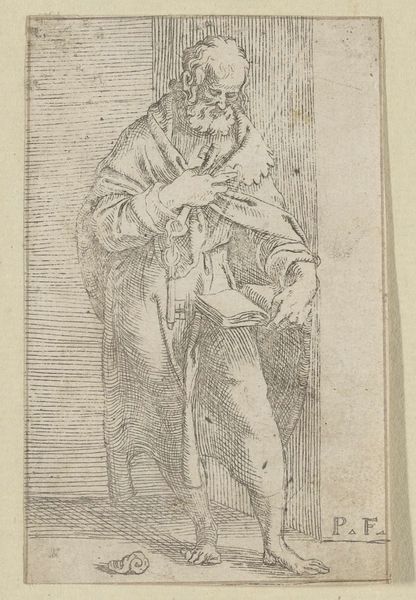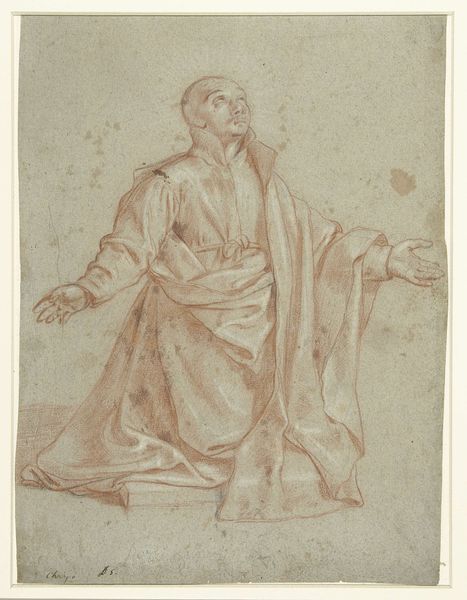
drawing, ink, pen, frottage
#
drawing
#
pencil sketch
#
11_renaissance
#
ink
#
coloured pencil
#
sketchbook drawing
#
pen
#
portrait drawing
#
frottage
Copyright: Public Domain
Curator: Immediately, I'm struck by the texture; it feels incredibly tactile despite being a two-dimensional image. Editor: Let's delve into this evocative piece. It’s titled "Wandernder Pilger oder Apostel, Halbfigur," dating back to around 1520. The artwork resides here at the Städel Museum, and it’s attributed to Monogrammist H K. Curator: There’s something quite somber and pensive about the figure; the downward gaze certainly contributes to that mood. The hatching work looks very labour-intensive. I find myself thinking about craft guilds and workshop practices of the time. What kind of access would this artist have had to his tools and materials? What social class would he belong to? Editor: Absolutely. Contextually, the early 16th century was a period of intense religious and social upheaval, especially in regions that would soon embrace the Reformation. Looking at this 'Wandering Pilgrim or Apostle', rendered in ink and pen, we can examine the figure's identity. Consider how his modest attire, and weary expression intersect with the anxieties of faith and displacement prevalent during that era. His gaze implies burden; maybe his travels are tied to the propagation of potentially heretical ideas? The intersection of spirituality and earthly hardship. Curator: You mention heresy, but the lines and robes create an undeniable aesthetic, a certain beauty born from labor and from humble materials. The weight of the robes and the seeming weight of the burden in his eyes, they remind us that even beauty can stem from hardship. Editor: Indeed. But I think looking beyond aesthetics also reveals how art participates in and often obscures certain power dynamics. The relative crudeness and seeming incompleteness of this study make me curious; Was this a commission or a devotional piece? Whose purpose does it ultimately serve? The line work indicates perhaps not a fully mastered draughtsman? Curator: That imperfection, to me, adds to its profound sense of human vulnerability, so very powerful for such simple methods of production, so humble. Editor: Ultimately, looking at the interplay between labor and spirituality provides so many readings of early Reformation concerns, and to reconsider traditional concepts about aesthetic beauty.
Comments
No comments
Be the first to comment and join the conversation on the ultimate creative platform.
